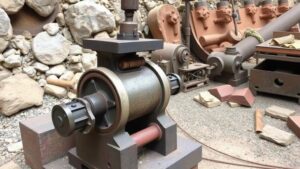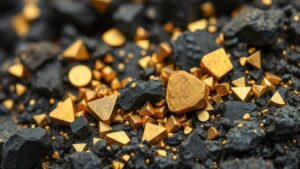Identifying Indicators of Silver-Lead-Zinc Deposits in Remote Areas
Identifying Indicators of Silver-Lead-Zinc Deposits in Remote Areas
Silver-lead-zinc (Ag-Pb-Zn) deposits are vital sources of metal essential for various industrial applications, from electronics to construction. The identification of these deposits, particularly in remote locations, requires specialized knowledge and techniques. This article explores the key indicators that geologists and mining professionals must consider when prospecting for such deposits in isolated areas.
Understanding Silver-Lead-Zinc Deposits
Silver-lead-zinc deposits typically form in hydrothermal environments, where hot mineral-rich waters flow through rock formations. e deposits can vary significantly in size and composition. Recognizing geological, geochemical, and geophysical indicators is crucial for efficient exploration. Common deposit types include:
- Volcanogenic Massive Sulfide (VMS) Deposits
- Epithermal Deposits
- Replacement Deposits
Geological Indicators
Geological features provide primary clues for the identification of silver-lead-zinc deposits.
- Rock Types: The presence of sedimentary rocks, particularly those rich in carbonates, is a positive indicator. For example, many deposits are found in limestone formations where mineralization occurs.
- Structural Features: Faults, fractures, and other structural anomalies can serve as conduits for mineral-rich fluids. Areas with significant tectonic activity are often promising zones for exploration.
Geochemical Exploration Techniques
Geochemical methods involve the analysis of soil, stream sediments, and rock samples to detect anomalies indicative of mineralization.
- Soil Sampling: Elevated levels of lead, zinc, or silver in soil samples can indicate proximity to a deposit. For example, soil assays from the Flin Flon area in Canada showed remarkable anomalies leading to significant discoveries.
- Stream Sediment Sampling: Anomalies in stream sediments can signal upstream mineralization. This method proved effective in exploring the Patagonian region of Argentina.
Geophysical Techniques
Geophysical surveys provide vital information without intrusive methods, which is especially useful in remote locations.
- Magnetic Surveys: These can help delineate iron-rich mineralization associated with Ag-Pb-Zn deposits.
- Electromagnetic Surveys: Resistivity measurements are indicative of sulfate-rich mineralization, essential for locating deposits.
Remote Sensing in Exploration
Utilizing advanced technologies like remote sensing has transformed the prospecting landscape, especially in difficult-to-access areas.
- Satellite Imagery: High-resolution images allow the identification of alteration patterns associated with mineral deposits.
- Aerial Surveys: Drones equipped with multispectral sensors can gather real-time data and provide detailed assessments of prospective regions.
Case Studies: Successful Identifications
Numerous successful explorations highlight the efficacy of these methods. For example, the Red Dog Mine in Alaska relies on combinations of geochemical sampling and advanced geological mapping to delineate considerable Ag-Pb-Zn resources. Similarly, the San Cristóbal Mine in Bolivia was developed through rigorous geophysical and geochemical exploration methods, leading to a significant discovery in remote terrain.
Challenges and Considerations
While identifying potential silver-lead-zinc deposits in remote areas is rewarding, it is not without its challenges:
- Inaccessibility: Remote locations may present logistical challenges, requiring significant investment in transportation and infrastructure.
- Environmental Concerns: The impact of exploration activities on delicate ecosystems must be assessed and managed conscientiously.
Conclusion
Identifying indicators of silver-lead-zinc deposits in remote areas involves a multi-faceted approach that combines geological, geochemical, and geophysical techniques. Successful exploration not only relies on a thorough understanding of the earths geology but also on the application of modern technology and careful consideration of environmental impacts. By employing these methods, mining professionals can increase their chances of discovering valuable mineral resources efficiently and sustainably.
Actionable Takeaways
- Leverage geological mapping and soil sampling as initial exploration tools.
- Use innovative geophysical techniques to enhance detection capabilities.
- Use remote sensing technologies for real-time data collection in inaccessible regions.

